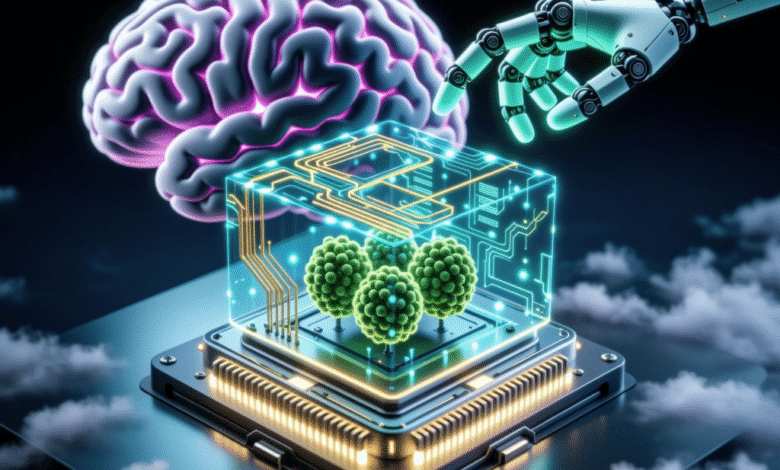Biochips Slash AI Energy Use by Mimicking the Brain

▼ Summary
– Generative AI systems consume vast amounts of energy, with their demand projected to double in five years, reaching 3% of global electricity consumption.
– Organoid intelligence, an emerging field, combines lab-grown brain cells (organoids) with hardware to create biochips that could outperform traditional silicon-based processors in efficiency and adaptability.
– Biochips mimic the brain’s 3D structure, enabling more efficient signal processing, and use reinforcement learning to train organoids for tasks like controlling robots or prosthetics.
– Challenges in scaling biochip technology include fragility, high maintenance, and the need for biocompatible materials, alongside hurdles in neural latency and signal noise.
– Companies like FinalSpark are exploring biochips for computing, aiming to match silicon performance with greater energy efficiency, though widespread adoption requires more funding and technical breakthroughs.
The energy demands of artificial intelligence are skyrocketing, with projections suggesting AI could consume 3% of global electricity within five years. Scientists are now exploring a radical solution: biochips that mimic the human brain’s remarkable efficiency. These hybrid systems combine lab-grown neural tissue with advanced electronics, potentially offering a breakthrough in sustainable AI development.
At the forefront of this research is Johns Hopkins University’s David Gracias, whose team has developed a 3D biochip capable of interacting with living neurons. Unlike traditional silicon processors, these biochips replicate the brain’s intricate three-dimensional structure, enabling more efficient signal processing. The key innovation lies in a flexible EEG shell that wraps around neural organoids—tiny clusters of brain cells grown in labs—allowing precise stimulation and monitoring of electrical activity.
Organoid intelligence, a term coined by researchers at Johns Hopkins, represents a fusion of biology and computing. By training neural clusters using reinforcement learning—rewarding desired responses with dopamine—scientists can program biochips to perform tasks like controlling robotic systems. Early experiments have already demonstrated biochip-guided miniature cars, hinting at future applications in robotics, prosthetics, and even brain-computer interfaces.
Beyond AI, biochips could revolutionize medical research. Gracias’s team is developing organoids that model neurological disorders such as Parkinson’s disease, providing a new way to test drugs without relying solely on animal trials. However, maintaining these living systems presents challenges—they require constant temperature control, nutrients, and waste removal, with current prototypes functioning for up to a month under lab conditions.
Scaling biochip technology remains a hurdle. Swiss startup FinalSpark is working on “bio bits,” storing data in living neurons, but questions linger about long-term stability and real-world integration. Neural latency, signal interference, and the difficulty of mass-producing biochips must be addressed before commercial viability.
Despite these obstacles, the potential benefits are undeniable. If perfected, biochips could drastically reduce AI’s energy footprint while enhancing learning capabilities. Gracias remains optimistic, stating there are no fundamental barriers preventing eventual market adoption. As AI’s power consumption becomes unsustainable, bio-inspired computing may offer the most promising path forward.
(Source: NewsAPI AI & Machine Learning)





